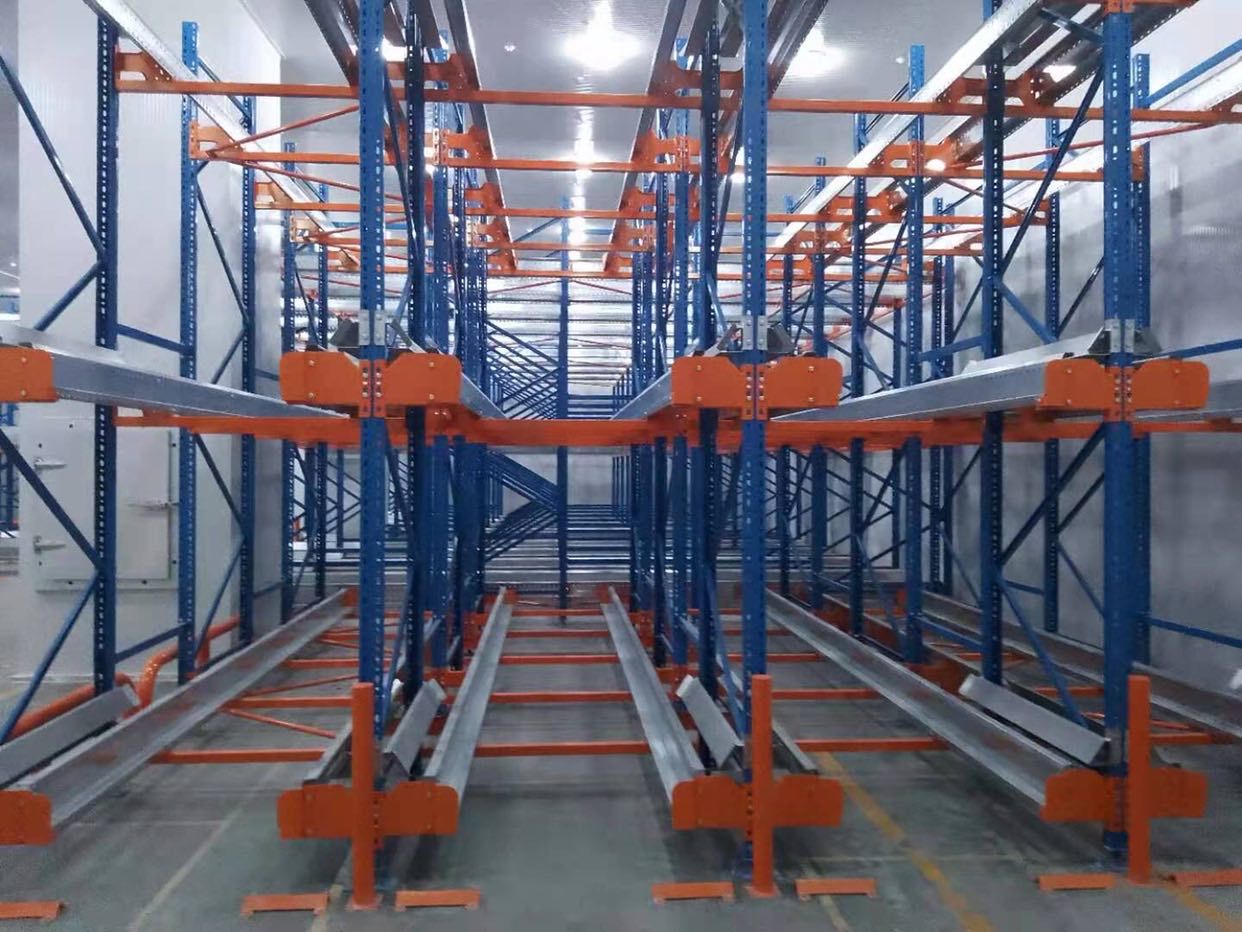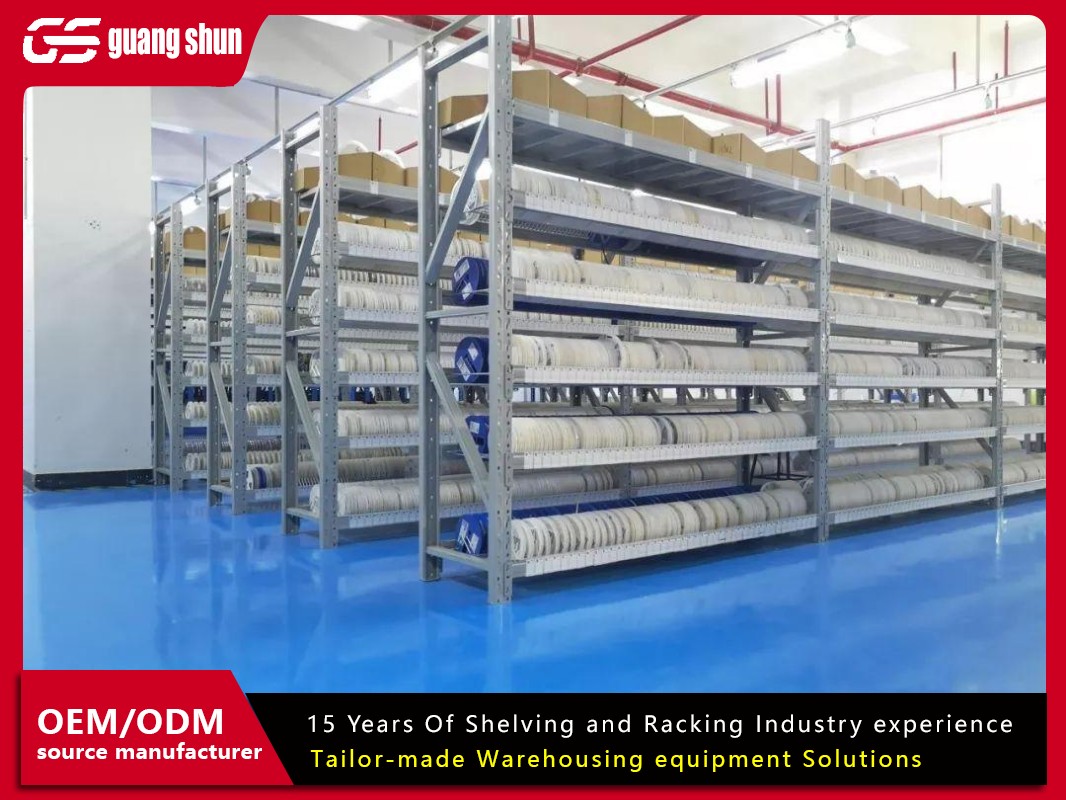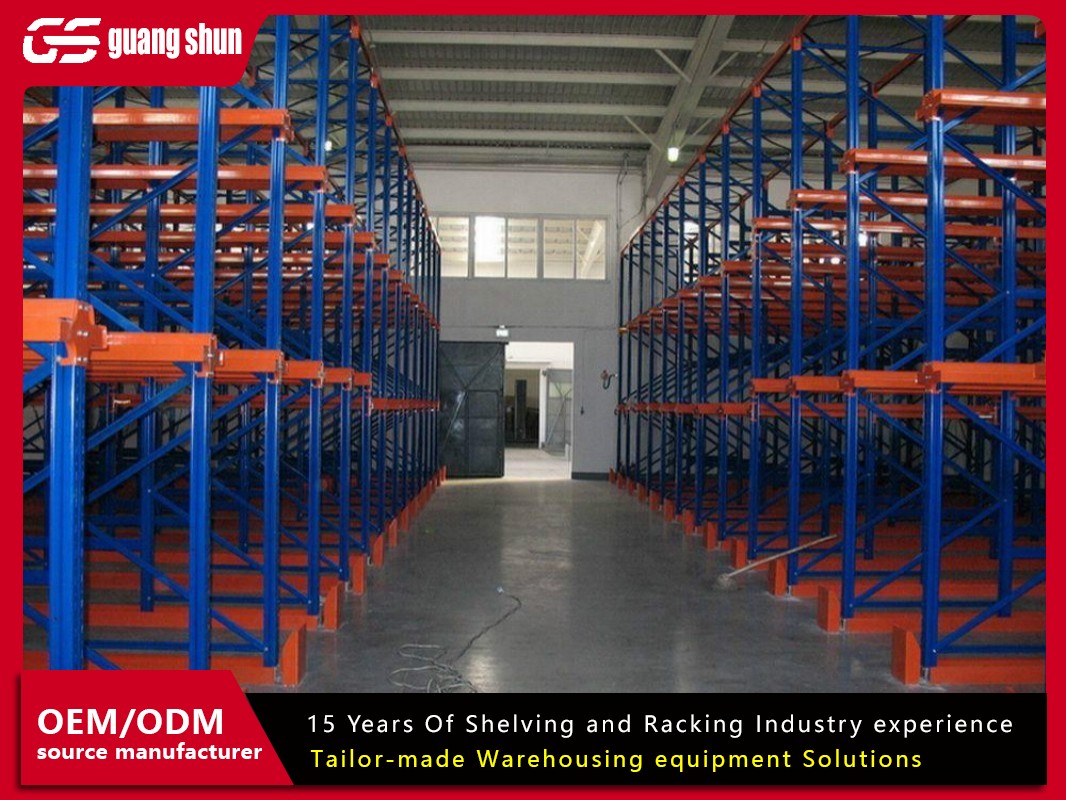In the relentless pursuit of warehouse optimization, maximizing cubic space without compromising accessibility is a constant challenge. Among the various pallet storage solutions available, the double deep pallet racking system stands out as a powerful strategy for significantly increasing storage density. This system strikes a balance between the high selectivity of single-deep racking and the ultra-high density of drive-in or push-back systems. Understanding its design, benefits, operational requirements, and ideal applications is crucial for warehouse managers aiming to enhance efficiency and reduce costs. This article delves deep into the five key aspects that define the double deep pallet racking system.

1. What is a Double Deep Pallet Racking System? Definition and Core Structure
At its core, a double deep pallet racking system is a variation of selective pallet racking. Unlike single-deep racking, where each pallet is directly accessible from the aisle, double deep configurations store pallets two-deep within each storage bay. This means two pallets are placed consecutively on the same beam level, one behind the other, perpendicular to the aisle.
The fundamental structure remains similar to selective racking:
•Upright Frames: Vertical columns forming the main support structure, available in various heights, depths, and load capacities.
•Beams: Horizontal members that connect to the upright frames, creating the support levels for the pallets. In a double deep pallet racking system, beams are typically longer to accommodate the depth of two pallets plus necessary clearances.
•Beam Connectors & Safety Clips: Secure the beams to the uprights.
•Wire Mesh Decking or Pallet Supports (Optional): Used for added safety or to support non-palletized loads or smaller items.
The defining characteristic is the depth: each storage position holds two pallets deep. Access requires a specialized forklift to reach the second pallet position. This simple modification fundamentally changes the storage density and operational dynamics compared to single-deep setups.
2. The Primary Advantage: Enhanced Storage Density and Space Utilization
The most compelling reason to implement a double deep pallet racking system is its significant boost in storage density. By storing pallets two deep instead of one, warehouses can effectively double the storage capacity within the same floor space footprint per bay, compared to single-deep racking.
Here's how the density gain is achieved:
•Reduced Aisle Requirements: While double deep requires wider aisles than single-deep (to accommodate the reach of the forklift), it requires far fewer aisles overall. Compared to single-deep, which needs an aisle for every single row of racking, double deep allows you to have one aisle serving two rows of racking (back-to-back).
•Increased Pallet Positions per Square Foot: By minimizing the total aisle space dedicated to the storage area, a higher percentage of the warehouse floor is utilized for actual storage. More pallets are stored within the same building envelope.
•Cube Utilization: This system efficiently utilizes the vertical space of the warehouse, similar to selective racking, while packing more pallets horizontally per row.
The space savings are typically substantial, often resulting in a 25-50% increase in pallet positions compared to a single-deep layout within the same warehouse footprint, depending on the specific layout, pallet size, and equipment used. This directly translates to lower real estate costs per pallet stored.

3. Design, Configuration, and Layout Considerations
Successfully implementing a double deep pallet racking system hinges on meticulous planning and design:
•Aisle Width: This is paramount. Aisles must be wide enough to accommodate the specific type of double reach truck or articulating very narrow aisle (VNA) truck that will operate within them. Aisle widths typically range from 10 to 12 feet (3.0 to 3.6 meters) for standard double reach trucks, wider than single-deep aisles but narrower than those needed for counterbalanced forklifts.
•Rack Depth: The depth of each bay is calculated based on the depth of two pallets plus necessary clearances (usually 3-6 inches per pallet) to prevent damage during loading/unloading and allow for beam deflection.
•Load Capacity: Uprights and beams must be specified to handle the combined weight of two pallet loads per beam level. Accurate weight calculations, including the weight of the pallets themselves, are essential for structural integrity and safety.
•Height: Like selective racking, double deep systems can utilize very high clear ceilings, maximizing vertical storage. The height is limited by building constraints and forklift lifting capabilities.
•Row Spacing: Back-to-back rows of double deep racking are typically spaced close together, separated only by necessary flue space for fire codes and minimal clearance.
•Selectivity: While offering higher density than single-deep, double deep is less selective. Pallets stored in the front position must be moved to access the rear pallet (Last-In-First-Out - LIFO - within each pair). Layouts often involve grouping SKUs with lower turnover or larger quantities in the rear positions.
Proper design requires professional engineering to ensure safety compliance with local regulations (e.g., OSHA, SEMA, RMI standards).
4. Operational Requirements: Forklift Equipment and Handling Practices
Operating efficiently within a double deep pallet racking system demands specialized material handling equipment and disciplined operational practices:
•Specialized Forklifts: Standard counterbalanced forklifts lack the reach and maneuverability. Double Reach Trucks are the most common solution. These feature telescoping forks that extend deep into the rack bay to place or retrieve the second pallet. Articulating Very Narrow Aisle (VNA) Trucks are another option, offering exceptional maneuverability in even narrower aisles and the ability to handle double deep storage.
•Forklift Operator Skill: Operating double reach or VNA trucks requires significantly more skill and training than operating standard forklifts. Operators must be highly proficient in precise fork placement, maneuvering in confined aisles, and handling the extended reach safely to avoid damaging racking or product.
•LIFO Inventory Management: Within each pair of pallet positions, the system inherently operates on a Last-In-First-Out (LIFO) basis. The pallet placed last (in the front) must be moved first to access the pallet behind it. This requires careful inventory management and slotting strategies.
•Slotting Strategy: Effective slotting is critical. High-turnover SKUs are best placed in the front positions of the double deep bays. Slower-moving items, or large quantities of the same SKU, are better suited for the rear positions. Grouping similar or compatible SKUs within a bay can also improve efficiency.
•Visibility and Safety: Retrieving the rear pallet involves reaching deep into the rack bay, which can slightly reduce visibility compared to single-deep picking. Strict safety protocols, good lighting, and potentially camera systems on the forklifts are essential.
5. Ideal Applications and Use Cases for Double Deep Racking
The double deep pallet racking system excels in specific warehouse environments:
•High-Volume, Lower SKU Count Warehouses: Facilities storing large quantities of fewer SKUs benefit immensely. Storing multiple pallets of the same product two-deep maximizes space without creating accessibility nightmares.
•Slow and Medium Turnover SKUs: Items that don't require constant, immediate access (e.g., seasonal products, raw materials in buffer stock, finished goods awaiting shipment) are perfect candidates for the rear positions in double deep bays. High-turnover items can occupy the front positions.
•Bulk Storage Areas: Zones dedicated to holding large quantities before distribution to picking areas or for long-term storage are prime locations for double deep racking.
•Warehouses with Space Constraints: When building expansion is impossible or prohibitively expensive, implementing a double deep pallet racking system is one of the most effective ways to increase capacity within existing walls.
•Cold Storage Facilities: The high cost per square foot in freezer/cooler environments makes dense storage solutions like double deep particularly attractive for maximizing valuable temperature-controlled space.
•Consolidation Warehouses: Facilities receiving full pallets from multiple suppliers and shipping full pallets to customers can leverage the density effectively.
6. Limitations and Considerations for Implementation
While highly effective, the double deep pallet racking system isn't a universal solution. Key limitations include:
•Reduced Selectivity (LIFO): Inability to directly access every pallet (specifically the rear pallet) without moving the front one is the main trade-off for density. This necessitates careful inventory management.
•Higher Forklift Costs: Double reach trucks and VNA trucks represent a significantly higher capital investment than standard forklifts. Maintenance costs may also be higher.
•Increased Forklift Operator Training Requirements: Operating this equipment safely and efficiently demands more extensive and ongoing training.
•Potential for Lower Throughput: Depending on the slotting and the frequency of accessing rear pallets, throughput per aisle might be slightly lower than a single-deep aisle because of the time required for the double reach operation. However, the overall facility throughput is often higher due to the vastly increased storage capacity and reduced travel time between fewer aisles.
•Pallet and Load Quality: Requires consistent, sturdy pallets and stable, well-stacked loads. Damaged pallets or unstable loads increase the risk of incidents when extending forks deep into the rack.
•Initial Investment: While saving space costs, the racking itself (longer beams) and the specialized forklifts require a higher initial investment compared to a single-deep system with standard forklifts.
The double deep pallet racking system presents a compelling solution for warehouses seeking a substantial increase in storage density without venturing into the complexities and access limitations of drive-in or push-back racking. By strategically storing pallets two deep and utilizing specialized forklifts, businesses can dramatically increase pallet positions within their existing footprint, leading to significant cost savings on real estate. However, its success hinges on thorough planning, investment in the right equipment (double reach or VNA trucks), skilled operators, disciplined LIFO inventory management within each bay, and strategic slotting. For facilities handling high volumes of fewer SKUs, or those with significant slow/medium-moving inventory, the double deep pallet racking system offers an optimal balance between space utilization, accessibility, and operational efficiency. Carefully evaluating your specific inventory profile, throughput requirements, and budget against the system's characteristics is essential to determine if double deep racking is the key to unlocking your warehouse's full potential.







